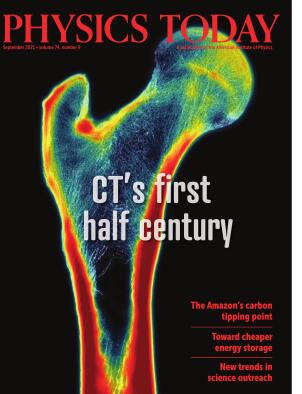Solid and liquid responses of a non-Newtonian fluid
DOI: 10.1063/PT.3.4843
Oobleck, a muddy mixture of cornstarch and water, is an example of what scientists term a discontinuous shear thickening fluid. Students marvel at its ability to support impulsive loads as if it were a solid. To investigate the counterintuitive substance, Deren Ozturk, Miles Morgan, and Bjørnar Sandnes of Swansea University in the UK shot pressurized air at oobleck sandwiched between two transparent plates 0.2 mm apart. These images show the substance’s response at various air pressures and cornstarch concentrations. Black regions are air pockets, and light regions are the cornstarch mixtures. The researchers were the first to use the thin oobleck sandwich to observe three distinct responses: viscous fingering, dendritic fracturing, and large-scale fracturing.

Viscous-fingering features are characterized by rounded edges. They can be seen in the first and third images in the top row, the second image in the middle row, and the third image in the bottom row. Dendritic fracturing produces thinner branches that, unlike viscous-fingering offshoots, can be perpendicular to their parent branch. Such branching is visible in the second image in the top row and the first and second images in the bottom row. Large-scale fracturing doesn’t have many offshoots. It is discernible in the first and third images in the middle row. Ozturk and colleagues found that viscous fingering appears at low air pressures and low concentrations, dendritic fracturing happens at intermediate pressures and concentrations, and large-scale fracturing is seen in mixtures with high concentrations and air pressures. Viscous fingering is oobleck’s liquid response, whereas both types of fracturing can be understood as the gooey substance’s solid-like responses. (D. Ozturk, M. L. Morgan, B. Sandnes, Commun. Phys. 3, 119, 2020, doi:10.1038/s42005-020-0382-7
